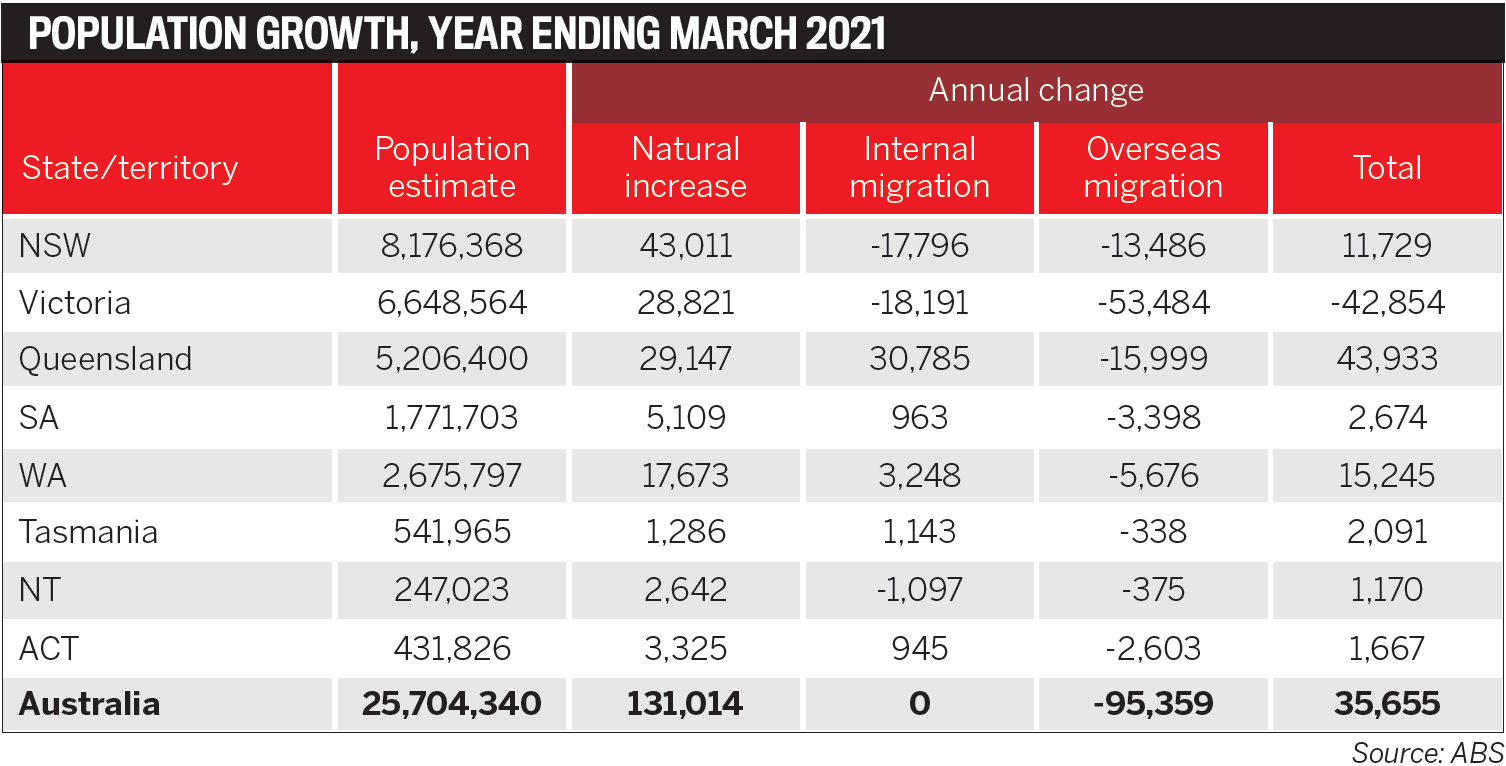

Australian’s population growth has stalled due to the coronavirus pandemic, but numbers are rising in some states where COVID has had little impact, says independent property analyst Michael Matusik.
Real estate is essentially about supply and demand. Demand comes in two forms – the number of people looking to buy an existing property, and the underlying need to build more homes.
Population growth is a key factor when determining underlying demand.
In short, the higher the level of population growth, the greater the need to build more homes. In general, each time an area’s population increases by 2.5 people there is a need to build another dwelling.
The table at right breaks down last year’s population change by state and territory.
Due to the federal government’s response to COVID-19, Australia’s population has basically stalled, standing at around 25.7 million. There was an increase of just 35,700 new residents over the past 12 months – the lowest growth rate since the population declined in 1916 due to World War I.
Natural increase – an increase of 131,000 – was off set by substantially more people leaving to go overseas than coming into Australia. Net overseas migration (NOM) was -95,300 for the 12 months ending March 2021.
NOM is historically positive and a major driver of Australia’s population growth. The country had a NOM of between 200,000 and 300,000 per annum for many years until COVID hit.

One thing which is clear from these figures is that the ‘COVID zero’ states that have not been heavily affected by the virus and associated lockdowns are growing in population, while the most affected states are declining or stable.
There is a clear movement of people out of NSW and Victoria into Queensland and WA, while SA has turned the tables from losing population to interstate migration to a slight gain.
Population growth is expected to recover once international borders are reopened, which, as at the last guidance, should be from 2022. Immigration accounted for two-thirds of Australia’s population growth prior to the pandemic, and the federal government appears committed to resuming past NOM flows.
Current Treasury projections have Australia’s annual net immigration back to 235,000 people by fiscal 2024, and the latest Intergenerational Report suggests that NOM – again averaging 235,000 people per year – will apply for decades to come.
If this happens, Australia’s population will increase by 13 million people (more than 50%) over the next 40 years to
39 million people – equivalent to adding another Sydney, Melbourne and Brisbane to Australia’s existing population.
Michael Matusik
Director, Matusik Property Insights
